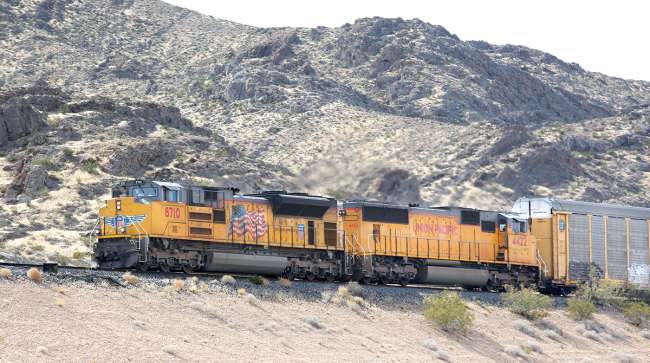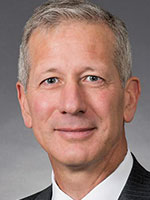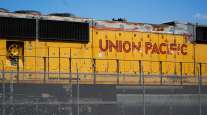Senior Reporter
Union Pacific Announces Strong Q4, 2021 Earnings

[Stay on top of transportation news: Get TTNews in your inbox.]
Union Pacific Corp. saw strong fourth-quarter earnings and record results for 2021, the company announced Jan. 20.
The Omaha, Neb.-based Class I freight railroad said Q4 operating revenue increased 12% to $5.73 billion compared with $5.14 billion in 2020. Full-year revenue rose 12% to $21.8 billion compared with $19.5 billion in 2020.
For Q4, net income soared 24% to $1.71 billion, or $2.67 a share, compared with $1.38 billion, $2.05, in the same period in 2020. For the year UP said net income rose 22% to $6.52 billion, $9.98, compared with $5.34 billion, $7.90, in 2020.
The company’s Q4 operating ratio dipped to 57.4 compared with 61.0 in 2020. For the year the railroad saw that number decline to a record of 57.2, down from 59.9 last year.
Operating ratio measures a company’s expenses as a percentage of revenue and determines efficiency. The lower the ratio, the more ability the company has to make a profit.
The company’s Q4 results beat Wall Street expectations. Zacks Investment Research expected earnings of $2.60 per share on revenue of $5.55 billion.
The railroad said the strong results came amid a challenging fourth quarter, as it saw ongoing supply chain problems, a lingering computer chip shortage that is hurting a key business line — vehicle shipments — and pandemic-related crew shortages as the coronavirus spread through its workforce.

Fritz
“The Union Pacific team concluded its most profitable year ever in 2021,” CEO Lance Fritz said in a statement. “We produced double-digit fourth-quarter revenue growth by leveraging our great rail franchise to generate positive business mix and core pricing gains, despite ongoing global supply chain challenges that impacted volumes.”
He added that the company for the third consecutive year improved its fuel consumption rate, taking steps to reduce its carbon footprint and meet the goals outlined in a 2021 climate plan.
Despite ongoing challenges, Fritz said UP is optimistic going forward. “While our safety and operational performance in 2021 did not meet expectations, we look to convert recent progress into sustained improvement in 2022,” he said. “Although uncertainty remains around COVID variants and supply chain disruptions, we see a positive demand environment in 2022 and continued traction from business development efforts driving growth as we deliver value to all our stakeholders.”
The company also expanded on a Jan. 19 announcement that it will be the primary intermodal rail provider in the western U.S. for Schneider’s intermodal business beginning in January 2023.
“Schneider’s Intermodal business is a great fit for Union Pacific’s diverse network,” Fritz said.
Green Bay, Wis.-based Schneider has for more than 30 years operated a dedicated intermodal service, with more than 45 ramps in North America and 25,000 intermodal containers. The company said this new partnership will more than double its intermodal network by 2030.
Union Pacific is pleased to announce it will be the primary intermodal rail transportation provider in the western U.S. for @WeAreSchneider effective January 2023. https://t.co/QGqitIFg49 — Union Pacific (@UnionPacific) January 19, 2022
Schneider said it will continue to move freight with its current Western rail provider for the remainder of 2022 before a full transition to the UP network.
The Schneider agreement is similar to one UP announced last summer with Knight-Swift Transportation. That Phoenix-based transportation company is now moving intermodal freight, especially on the heavily traveled corridors of Interstate 10 from Phoenix to Los Angeles, and the Interstate 5 corridor between Los Angeles and the Seattle/Tacoma area. At the time of the announcement Knight-Swift said its decision to switch to UP was based on the strength of UP’s intermodal network in key markets.
Officials with UP also addressed the increasing number of package thefts in Los Angeles, promising to increase both its security presence and add more officers to patrol the length of track where criminals have struck.
Across its various business sectors UP saw year-over-year double-digit revenue growth, with the exception of automotive shipments, which declined 3%:
- Grain products were up 11% to $889 million.
- Fertilizer shipments rose 9% to $176 million.
- Food and refrigerated cargo climbed 7% to $259 million.
- Coal and renewable energy products increased 36% to $485 million.
- Industrial chemicals and plastics notched upward 10% to $507 million.
- Metals and minerals showed a 27% hike to $481 million.
- Forest products moved up 14% to $351 million.
- Energy and specialized markets increased 8% to $558 million.
- Automotive shipments declined 3% to $469 million.
- Intermodal freight moved up 3% to $1.59 billion.
Union Pacific ranks No. 12 on the Transport Topics Top 50 Global Freight Carriers list.
Want more news? Listen to today's daily briefing below or go here for more info:


